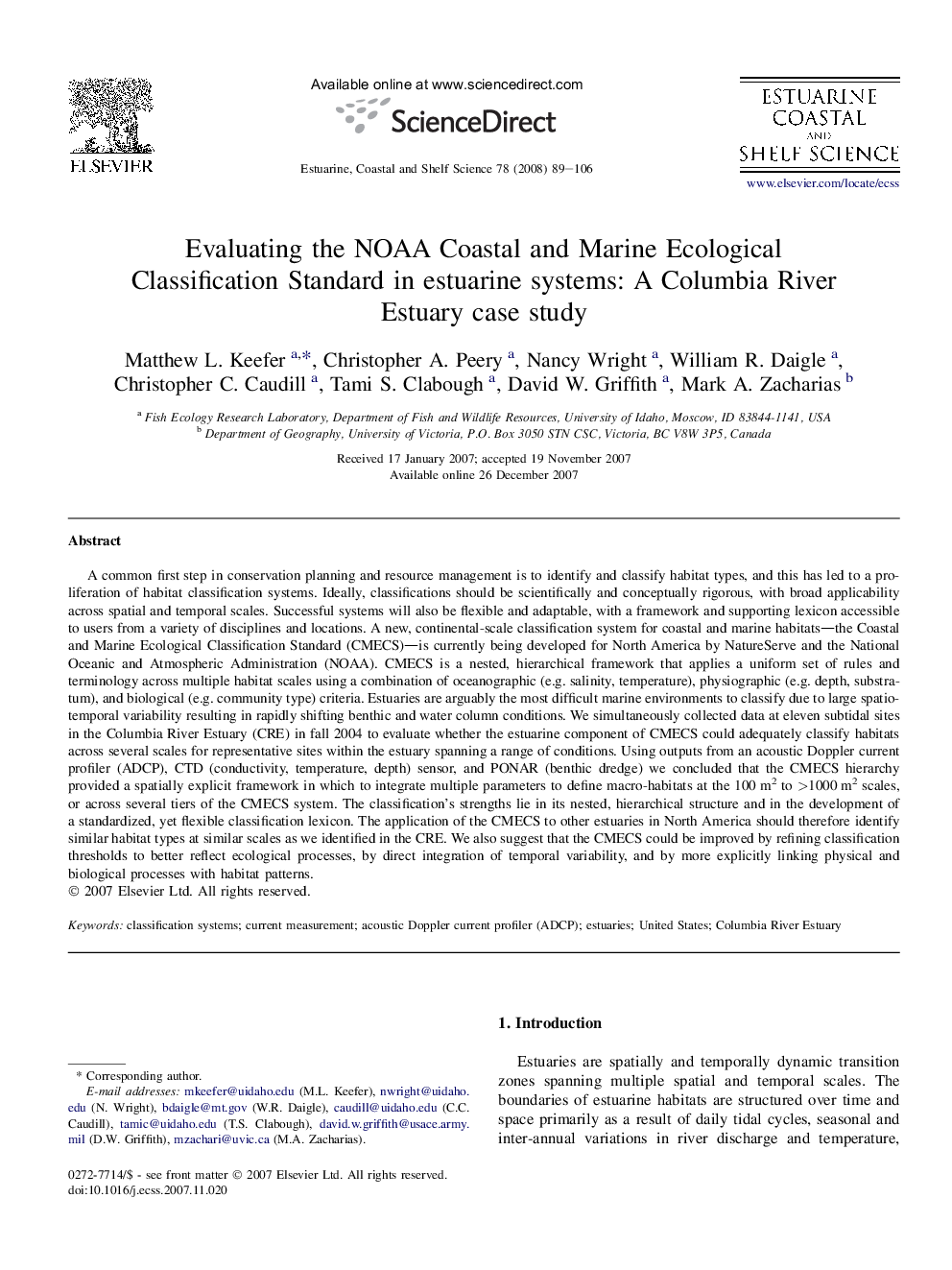| کد مقاله | کد نشریه | سال انتشار | مقاله انگلیسی | نسخه تمام متن |
|---|---|---|---|---|
| 4541455 | 1326725 | 2008 | 18 صفحه PDF | دانلود رایگان |

A common first step in conservation planning and resource management is to identify and classify habitat types, and this has led to a proliferation of habitat classification systems. Ideally, classifications should be scientifically and conceptually rigorous, with broad applicability across spatial and temporal scales. Successful systems will also be flexible and adaptable, with a framework and supporting lexicon accessible to users from a variety of disciplines and locations. A new, continental-scale classification system for coastal and marine habitats—the Coastal and Marine Ecological Classification Standard (CMECS)—is currently being developed for North America by NatureServe and the National Oceanic and Atmospheric Administration (NOAA). CMECS is a nested, hierarchical framework that applies a uniform set of rules and terminology across multiple habitat scales using a combination of oceanographic (e.g. salinity, temperature), physiographic (e.g. depth, substratum), and biological (e.g. community type) criteria. Estuaries are arguably the most difficult marine environments to classify due to large spatio-temporal variability resulting in rapidly shifting benthic and water column conditions. We simultaneously collected data at eleven subtidal sites in the Columbia River Estuary (CRE) in fall 2004 to evaluate whether the estuarine component of CMECS could adequately classify habitats across several scales for representative sites within the estuary spanning a range of conditions. Using outputs from an acoustic Doppler current profiler (ADCP), CTD (conductivity, temperature, depth) sensor, and PONAR (benthic dredge) we concluded that the CMECS hierarchy provided a spatially explicit framework in which to integrate multiple parameters to define macro-habitats at the 100 m2 to >1000 m2 scales, or across several tiers of the CMECS system. The classification's strengths lie in its nested, hierarchical structure and in the development of a standardized, yet flexible classification lexicon. The application of the CMECS to other estuaries in North America should therefore identify similar habitat types at similar scales as we identified in the CRE. We also suggest that the CMECS could be improved by refining classification thresholds to better reflect ecological processes, by direct integration of temporal variability, and by more explicitly linking physical and biological processes with habitat patterns.
Journal: Estuarine, Coastal and Shelf Science - Volume 78, Issue 1, 1 June 2008, Pages 89–106